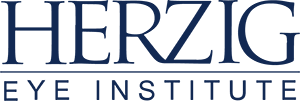Herzig Eye Institute in Refractive Surgery on July 26, 2016
If you’ve been thinking of trading in your glasses for years, or maybe even decades, you might be wondering, “How long does LASIK last?” Can one surgical procedure really be a long-term solution for those old eyeglasses?
For most people, improved vision through LASIK surgery is permanent.
It’s a delicate surgical procedure that allows for a very predictable healing response. Your vision stabilizes rapidly, so you can expect to have little or no discomfort following LASIK. Most patients have driving vision within 24 hours of treatment.
WHAT ARE THE OPTIONS?
Laser Vision Correction is one of the most exciting technological advances in the history of eye care. This extraordinary technology has evolved into two procedures, LASIK and PRK. Both are performed by an ophthalmologist specializing in Laser Vision Correction.
LASIK (which stands for “Laser Assisted In Situ Keratomileusis”) is the most frequently used procedure for Laser Vision Correction. A wide range of vision-related conditions, such as myopia, hyperopia, and astigmatism, can be corrected by LASIK.
Many patients who were once deemed ineligible for LASIK surgery with a microkeratome (due to steep, flat or thin corneas) may be considered candidates for the LASIK procedure using IntraLase®. This means if you were turned down as a candidate for LASIK several years ago because of your corneas, you may be a candidate using IntraLase®. The IntraLase® method is a 100% blade-free approach to creating a corneal flap.
PRK (Photorefractive Keratectomy) is the same laser procedure as LASIK. It differs, however, in how the cornea is prepared for the laser treatment.
With PRK, the corneal epithelium is gently removed and the laser is applied. Today, PRK is commonly referred to as “surface ablation,” meaning a laser procedure that is applied to the surface of the cornea.
The Herzig Eye Institute is one of the first in Canada to offer the iDesign Advanced WaveScan Studio aberrometer. This advanced diagnostic vision mapping tool precisely measures and analyzes each eye’s imperfections prior to your laser vision correction procedure. Our surgeons use the iDesign technology to create a blueprint of each of your eyes in order to develop a treatment plan just for you.
WHAT IF I NEED A FOLLOW-UP?
In a very small percentage of patients, a little bit of regression can occur during or after the healing process. At the Herzig Eye Institute, this happens in less than 2% of all cases, a number that is lower than most laser centers and is indicative of the quality and experience of our surgeons and technology.
Most patients will have excellent vision with just one treatment, however, the small percentage who require the LASIK enhancement procedure are covered by our Lifetime Commitment policy.
At the Herzig Eye Institute, we are also pleased to provide other safe options for patients deemed ineligible for any kind of Laser Vision Correction, including Refractive Lens Exchange (RLE) and Intraocular Collamer Lens (ICL). Your eyes are complex and precious, so when looking into Laser Vision Correction, it’s important to realize there is no “one-size-fits-all” option.




